In diesem Projekt erfahren Sie, wie Sie ein einfaches eine Glassware, die die Hauptfunktionen der Google Mirror API demonstriert.
Eine vollständige Demo des Schnellstartprojekts finden Sie unter https://glass-python-starter-demo.appspot.com. Andernfalls lesen Sie weiter, um zu erfahren, wie Sie Ihre eigene Version bereitstellen.
Vorbereitung
Das App Engine SDK für Python: Das Python-Schnellstartprojekt wird mithilfe von App Engine implementiert. Du brauchst das Python App Engine SDK, um Ihr Projekt zu entwickeln und bereitzustellen. Führen Sie das Installationsprogramm aus, falls dies für Ihre Plattform erforderlich ist, oder extrahieren Sie die ZIP-Datei. an einem geeigneten Ort auf.
Google App Engine-Instanz erstellen
Sie müssen das Schnellstartprojekt auf einer Instanz von Google App Engine hosten:
- Rufen Sie http://appspot.com auf.
- Klicken Sie auf Anwendung erstellen und erstellen Sie eine öffentliche Google App Engine-Instanz, die auf
appspot.comgehostet wird. - Weisen Sie der Anwendung eine Anwendungs-ID zu und lassen Sie die Authentifizierung Offen für alle Google Kontonutzer. Sie benötigen die Anwendungs-ID später, um das Schnellstartprojekt zu konfigurieren.
Google APIs Console-Projekt erstellen
Aktivieren Sie als Nächstes den Zugriff auf die Google Mirror API:
- Rufen Sie die Google APIs-Konsole auf und erstellen Sie ein neues API-Projekt.
- Klicken Sie auf Dienste und aktivieren Sie die Google Mirror API für Ihr neues Projekt.
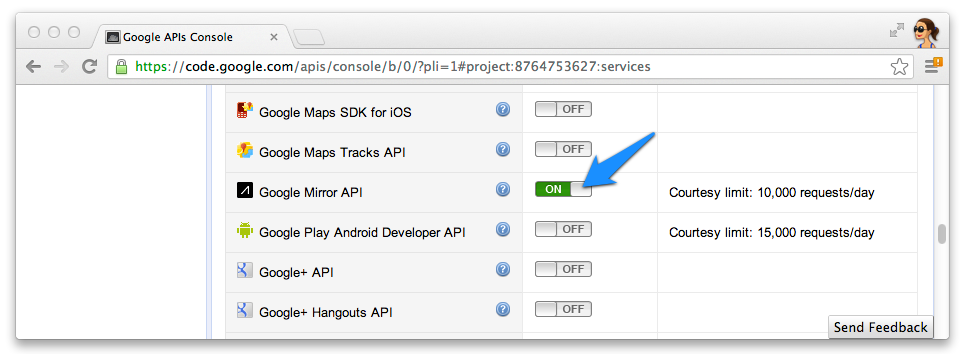
- Klicken Sie auf API-Zugriff und erstellen Sie eine OAuth 2.0-Client-ID für eine Webanwendung.
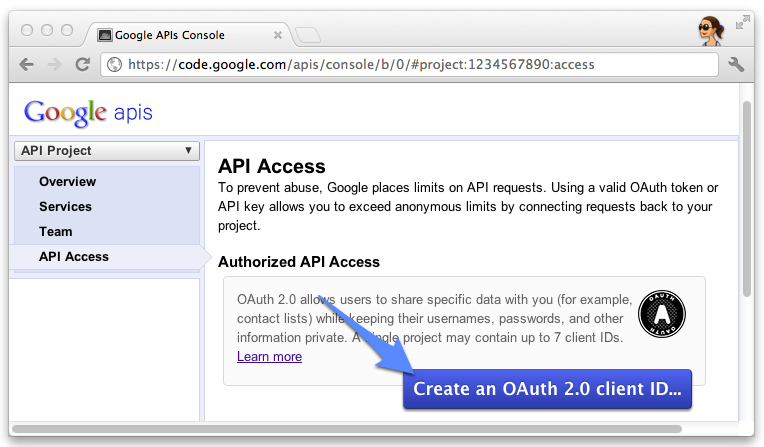
- Geben Sie den Produktnamen und das Symbol für Ihre Glassware an. Diese Felder werden in der OAuth-Zustimmung angezeigt.
Bildschirm, der den Nutzenden angezeigt wird.
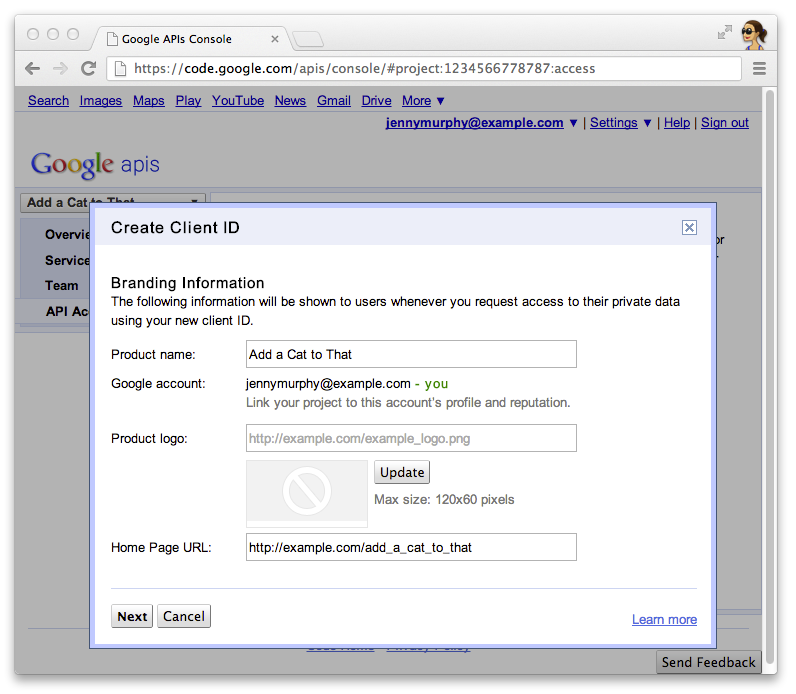
- Wählen Sie Webanwendung aus und geben Sie einen beliebigen Wert für den Hostnamen an, zum Beispiel
localhost.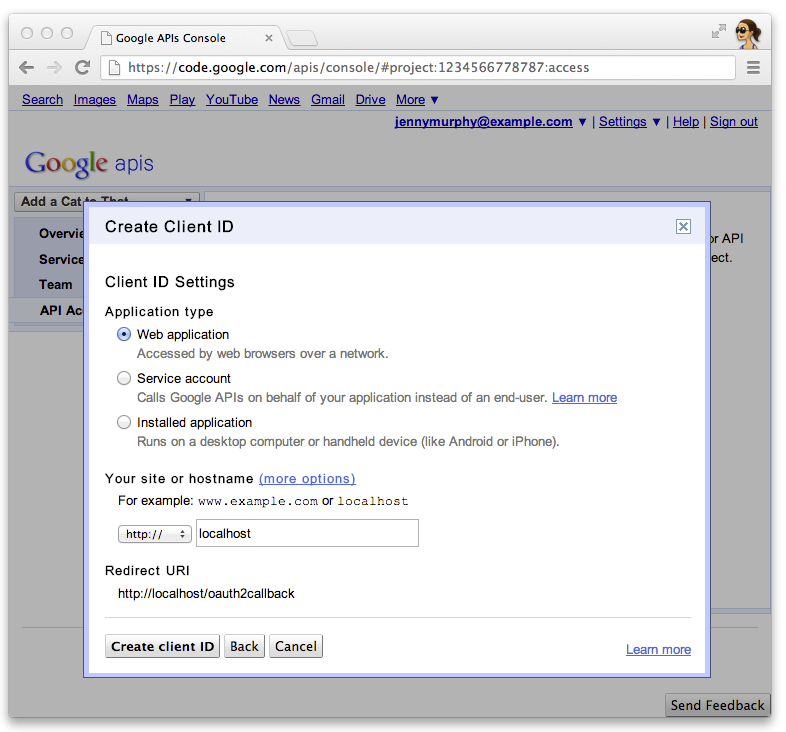
- Klicken Sie für die Client-ID auf Einstellungen bearbeiten..., um Weiterleitungs-URIs anzugeben. Definieren
http://localhost:8080/oauth2callbackund die Callback-URL für Ihre App Engine z. B.https://myappengineinstance.appspot.com/oauth2callback.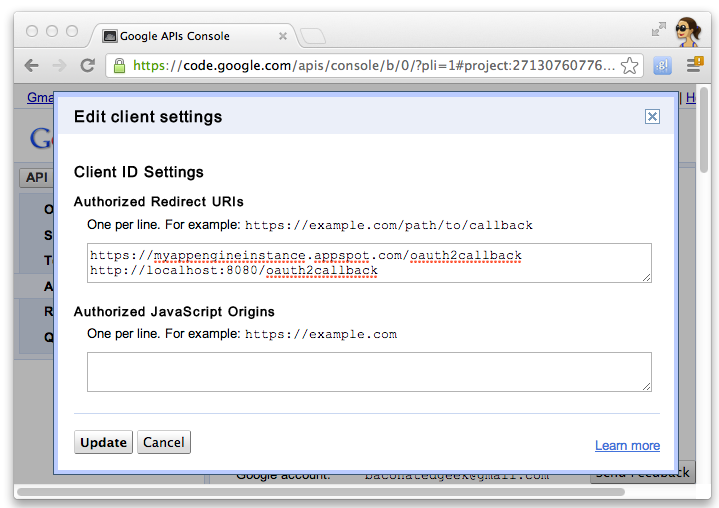
- Notieren Sie sich die Client-ID und das Secret aus der Google APIs-Konsole. Sie benötigen
um das Schnellstartprojekt zu konfigurieren.
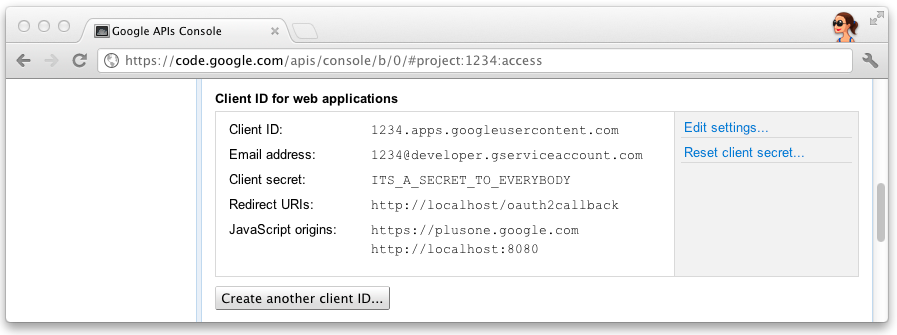
Projekt konfigurieren
Konfigurieren Sie das Schnellstartprojekt für die Verwendung Ihrer API-Clientinformationen:
- Gib deine Client-ID und dein Secret in
client_secrets.jsonein:{ "web": { "client_id": "1234.apps.googleusercontent.com", "client_secret": "ITS_A_SECRET_TO_EVERYBODY", "redirect_uris": [ ], "auth_uri": "https://accounts.google.com/o/oauth2/auth", "token_uri": "https://accounts.google.com/o/oauth2/token" } }
- Generiere eine
session.secret-Datei, um Sitzungscookies zu speichern:$ python -c "import os; print os.urandom(64)" > session.secret
- Bearbeiten Sie
app.yaml, um Ihre App Engine-Anwendungs-ID einzugeben:application: your_app_engine_application_id version: 1 runtime: python27 api_version: 1 threadsafe: true ...
Projekt bereitstellen
Klicken Sie auf der Benutzeroberfläche zum Starten der App Engine auf die blaue Schaltfläche Deploy (Bereitstellen) oder führen Sie diese Shell aus. , um Ihren Code bereitzustellen:
$ appcfg.py --oauth2 update .

